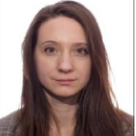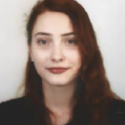International Journal of Image, Graphics and Signal Processing (IJIGSP)
IJIGSP Vol. 16, No. 5, 8 Oct. 2024
Cover page and Table of Contents: PDF (size: 1369KB)
Low-Light Image Enhancement Technology Based on Image Categorization, Processing and Retinex Deep Network
PDF (1369KB), PP.1-13
Views: 0 Downloads: 0
Author(s)
Index Terms
Low-Light Image Enhancement, Image Contrast Enhancement, Retinex Deep Network, Image Processing, Image Knowledge Extraction
Abstract
Low-light scenes are characterized by the loss of illumination, the noise, the color distortion and serious information degradation. The low-light image enhancement is a significant part of computer vision technology. The low-light image enhancement methods aim to an image recover to a normal-light image from dark one, a noise-free image from a noisy one, a clear image from distorting one. In this paper, the low-light image enhancement technology based on Retinex-based deep network combined with the image processing-based module is proposed. The proposed technology combines the use of traditional and deep learning methodologies, designed within a simple yet efficient architectural framework that focuses on essential feature extraction. The proposed preprocessing module of low-light image enhancement is centered on the unique knowledge and features of an image. The choice of a color model and a technique of an image transformation depends on an image dynamic range to ensure high results in terms of transfer a color, detail integrity and overall visual quality. The proposed Retinex-based deep network has been trained and tested on transformed images by means of preprocessing module that leads to an effective supervised approach to low-light image enhancement and provide superior performance. The proposed preprocessing module is implemented as an independent image enhancement module in a computer system of an image analysis and as the component module in a neural network system of an image analysis. Experimental results on the low light paired dataset show that the proposed method can reduce noise and artifacts in low-light images, and can improve contrast and brightness, demonstrating its advantages. The proposed approach injects new ideas into low light image enhancement, providing practical applications in challenging low-light scenarios.
Cite This Paper
Zhengbing Hu, Oksana Shkurat, Krzysztof Przystupa, Orest Kochan, Marharyta Ivakhnenko, "Low-Light Image Enhancement Technology Based on Image Categorization, Processing and Retinex Deep Network", International Journal of Image, Graphics and Signal Processing(IJIGSP), Vol.16, No.5, pp. 1-13, 2024. DOI:10.5815/ijigsp.2024.05.01
Reference
[1]X. Xu, S. Wang, Z. Wang, X. Zhang, R. Hu, “Exploring image enhancement for salient object detection in low light images,” ACM Transactions on Multimedia Computing, Communications, and Applications, Vol. 17 (8), pp. 1-19, 2021.
[2]C. Chen, Q. Chen, J. Xu, and V. Koltun, “Learning to see in the dark,” IEEE Conference on Computer Vision and Pattern Recognition, pp. 3291–3300, 2018.
[3]F. Tao, X. Yang, W. Wu, K. Liu, Z. Zhou, Y. Liu, “Retinex-based image enhancement framework by using region covariance filter,” Soft Computing, Vol. 22, pp. 1399-1420, 2018.
[4]Z. Li, Z. Jia, J. Yang, N. Kasabov, “An efficient and high quality medical CT image enhancement algorithm,” International Journal of Imaging Systems and Technology, Vol. 30 (2), pp. 939-949, 2020.
[5]M. Wang, E. Wang, X. Liu, C. Wang, “Scale-space effect and scale hybridization in image intelligent recognition of geological discontinuities on rock slopes,” Journal of Rock Mechanics and Geotechnical Engineering, Vol. 16 (4), pp. 1315-1336, 2024.
[6]B. Turan, “An Image Enhancement Method For Night-Way Images,” Balkan Journal of Electrical and Computer Engineering, Vol. 9 (1), pp. 8-16, 2021.
[7]V. Lyashenko, R. Matarneh, O. Kobylin, “Contrast modification as a tool to study the structure of blood components,” Journal of Environmental Science, Computer Science and Engineering & Technology, Vol. 5 (3), pp. 150-160, 2016.
[8]S. Javadi, M. Dahl, M.I. Pettersson, “Adjustable Contrast Enhancement Using Fast Piecewise Linear Histogram Equalization,” CIGP 2020: 3rd International Conference on Image and Graphics Processing, pp. 37-61, 2020.
[9]M.R. Alsharif, F. Hossain, “Medical Image Enhancemet Using Logarithmic Transform,” Vol. 69, pp. 91-94, 2008.
[10]F. Russo, “Piecewise Linear Model-Based Image Enhancement,” EURASIP Journal on Applied Signal Processing, Vol. 12, pp. 1861-1869, 2004.
[11]Q. Mu, X. Wang, Y. Wei, Z. Li, “Low and non-uniform illumination color image enhancement using weighted guided image filtering,” Computational Visual Media, Vol. 7 (4), pp. 529-546, 2021.
[12]Y.S. Sulema, O.S. Shkurat, “Histological Image Contrast Enhancement Technique Based on HSV Colour Model,” Eighth Scientific Conference of Masters and Postgraduate “Applied Mathematics and Computing” (AMC 2016), pp. 265-269, 2016.
[13]G. Cao, L. Huang, H. Tian, X. Huang, Y. Wang, R. Zhi, “Contrast enhancement of brightness-distorted images by improved adaptive gamma correction,” Computers & Electrical Engineering, Vol. 66, pp. 569-582, 2018.
[14]X. Li, M. Liu, Q. Ling, “Pixel-Wise Gamma Correction Mapping for Low-Light Image Enhancement,” IEEE Transactions on Circuits and Systems for Video Technology, Vol. 34 (2), pp. 681-694, 2024.
[15]Q. Wang and R. K. Ward, “Fast image/video contrast enhancement based on weighted thrsholded histogram equalization,” Consumer Electronics, IEEE Transactions on, Vol. 53 (2), pp. 757-764, 2007.
[16]N. S. P. Kong, H. Ibrahim, S. C. Hoo, “A literature review on histogram equalization and its variations for digital image enhancement,” International Journal of Innovation, Management and Technology, Vol. 4 (4), pp. 386-389, 2013.
[17]D. Menotti, M.L. Najman, J. Facon, A. de A. Ara´ujo, “Multi-histogram equalization methods for contrast enhancement and brightness preserving,” Consumer Electronics, IEEE Transactions on, Vol. 53 (3), pp. 1186-1194, 2007.
[18]H. Ibrahim, “Histogram equalization with range offset for brightness preserved image enhancement,” International Journal of Image Processing (IJIP), Vol. 5 (5), pp. 599-609, 2011.
[19]M. Wan, G. Gu, W. Qian, K. Ren, Q. Chen, X. Maldague, “Infrared image enhancement using adaptive histogram partition and brightness correction,” Remote Sensing, Vol. 10 (5), pp. 1-34, 2018.
[20]L. Shen, W. Wei, T. Chen, “Low illumination image enhancement based on attention mechanism and global illumination estimation,” Journal of Physics: Conference Series, Vol. 2589, 2023.
[21]T. Matsui, M. Ikehara, “Low-Light Image Enhancement Using a Simple Network Structure,” IEEE Access, Vol.23, pp. 65507-65516, 2023.
[22]J. Li, “Low-light image enhancement with contrast regularization,” Frontiers in Computing and Intelligent Systems, Vol. 1(3), pp. 25-28, 2022.
[23]Y. Fang, C. Zhang, W. Yang, J. Liu, Z. Guo, “Blind visual quality assessment for image super-resolution by convolutional neural network,” Multimedia Tools and Applications, Vol. 77, pp. 29829-29846, 2018.
[24]S.-E. Weng, S.-G. Miaou, R. Christanto, “A Lightweight Low-Light Image Enhancement Network via Channel Prior and Gamma Correction,” arXiv, 2024.
[25]Y. Jiang, X. Gong, D. Liu, Y. Cheng, C. Fang, X. Shen, J. Yang, P. Zhou, Z. Wang. “EnlightenGAN: Deep light enhancement withoutpaired supervision,” Computer Vision and Pattern Recognition, 2019.
[26]X. Xu, R. Wang, J. Lu, “Low-Light Image Enhancement via Structure Modeling and Guidance,” ICCV, pp. 9893-9903, 2023.
[27]W. Wang, W. Chen, W. Yang, J. Liu, “GLADNet: Low-lightenhancement network with global awareness,” 13th IEEE International Conference on Automatic Face & Gesture Recognition (FG 2018), pp. 751-755, 2018.
[28]С. Wei, W. Wang, W. Yang, J. Liu, “Deep Retinex Decomposition for Low-Light Enhancement,” ArXiv, 2018.
[29]W. Wu, J. Weng, P. Zhang, X. Wang, W. Yang, J. Jiang, “URetinex-Net: Retinex-based Deep Unfolding Network for Low-light Image Enhancement,” IEEE/CVF Conference on Computer Vision and Pattern Recognition, pp. 5901-5910, 2022.
[30]Z. Wang, J. Zheng, H.-M. Hu, B. Li, “Naturalness Preserved Enhancement Algorithm for Non-Uniform Illumination Images,” IEEE Transactions on Image Processing, Vol. 22 (9), pp. 3538-3548, 2013.
[31]X. Fu, D. Zeng, Y. Huang, X.-P. Zhang, X. Ding, “A Weighted Variational Model for Simultaneous Reflectance and Illumination Estimation,” 2016 IEEE Conference on Computer Vision and Pattern Recognition (CVPR), pp. 2782-2790, 2016.
[32]M. Li, J. Liu, W. Yang, X. Sun, and Z. Guo, “Structure-revealing low-light image en-hancement via robust retinex model,” IEEE Transactions on Image Processing, Vol. 27 (6), pp. 2828-2841, 2018.
[33]Y. Wang, Z. Zhang, “Global attention retinex network for low light image enhancement,” Journal of Visual Communication and Image Representation, Vol.92, 2023.
[34]H. Hou, Y. Hou, Y. Shi, B. Wei, J. Xu, “NLHD: A Pixel-Level Non-Local Retinex Model for Low-Light Image Enhancement,” ArXiv, 2021.
[35]Z. Hu, O. Shkurat, M. Kasner, “Grayscale Image Colorization Method Based on U-Net Network,” International Journal of Image, Graphics and Signal Processing (IJIGSP), Vol. 16 (2), pp. 70-82, 2024.
[36]O. S. Shkurat, M.V. Ivakhnenko, “Software method of full-color image quality restoration based on deep learning model,” Sixteenth Scientific Conference of Masters and Postgraduate “Applied Mathematics and Computing” (AMC 2023), pp. 638 - 643, 2023.
[37]J. Yu, X. Hao, P. He, “Single-stage Face Detection under Extremely Low-light Conditions,” ICCV, pp. 3523-3532, 2021.
[38]W. Wang, W. Yang, J. Liu, “HLA-Face: Joint High-Low Adaptation for Low Light Face Detection,” CVPR, pp. 16195-16204, 2021.
[39]W. Wang, X. Wang, W. Yang, J. Liu, “Unsupervised face detection in the dark,” IEEE Transactions on Pattern Analysis and Machine Intelligence, Vol. 45, pp. 1250-1266, 2022.
[40]S. Cho, Na Rae Baek, J. Koo, M. Arsalan, K. Park, “Semantic segmentation with low light images by modified cyclegan-based image enhancement,” IEEE Access, Vol.8, pp. 93561-93585, 2020.
[41]Z. Zheng, Y. Wu, X. Han, J. Shi, “Forkgan: Seeing into the rainy night,” European conference on computer vision, pp. 155-170, 2020.
[42]T. Liu, Z. Chen, Y. Yang, Z. Wu, H. Li, “Lane Detection in Low-light Conditions Using an Efficient Data Enhancement: Light Conditions Style Transfer,” IEEE Intelligent Vehicles Symposium, pp. 1394-1399, 2020.
[43]W. Li, G. Wu, W. Wang, P. Ren, X. Liu, “FastLLVE: Real-Time Low-Light Video Enhancement with Intensity-Aware Lookup Table,” 31st ACM International Conference on Multimedia, pp. 8134-8144, 2023.
[44]M. Yang, X. Nie, and R. W. Liu, “Coarse-to-fine luminance estimation for low-light image enhancement in maritime video surveillance,” IEEE Intelligent Transportation Systems Conference (ITSC), pp. 299-304, 2019.
[45]R. Wan, B. Shi, W. Yang, B. Wen, L.-Y. Duan, A. C. Kot, “Purifying low-light images via near-infrared enlightened image,” IEEE Transactions on Multimedia, 2022.




